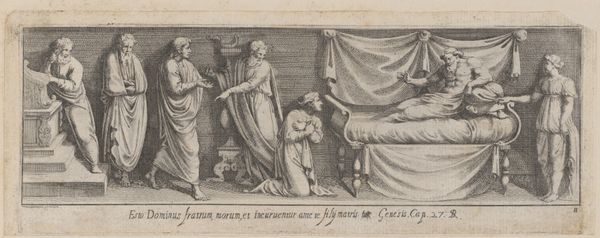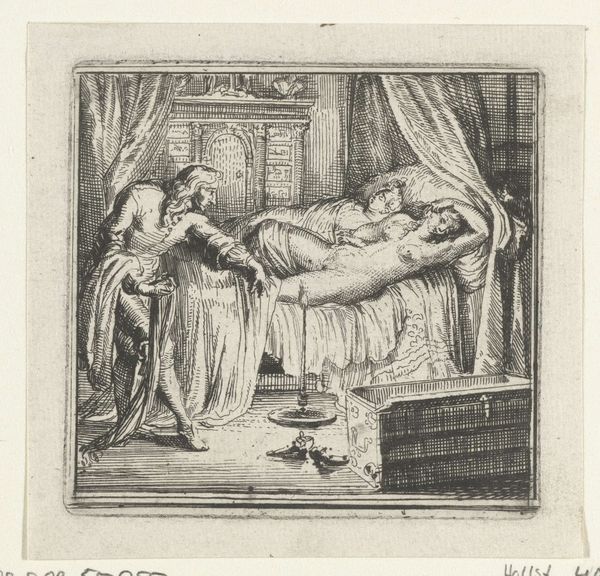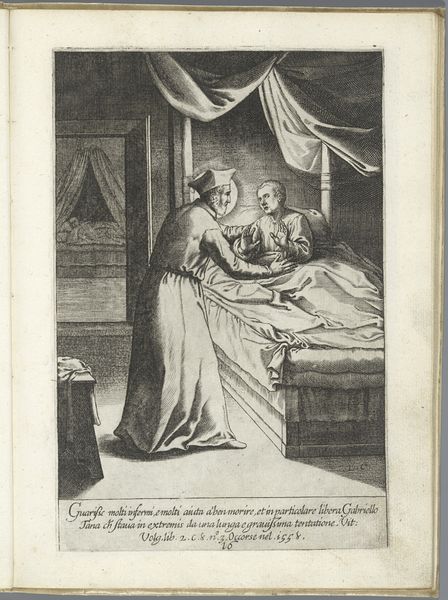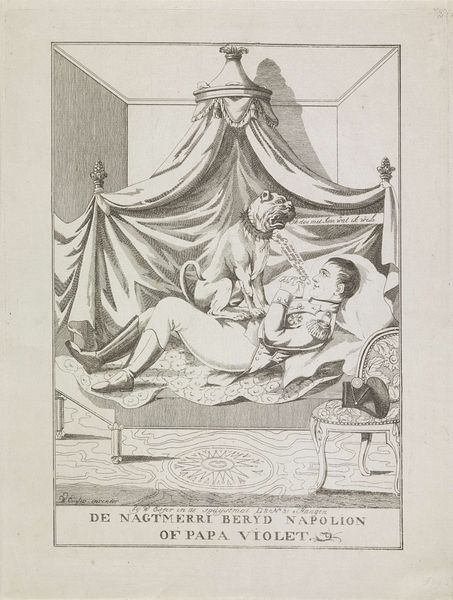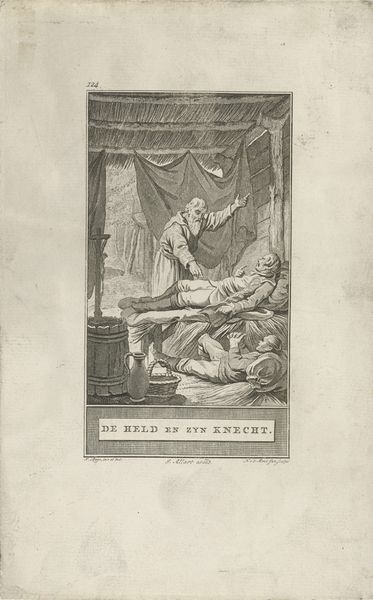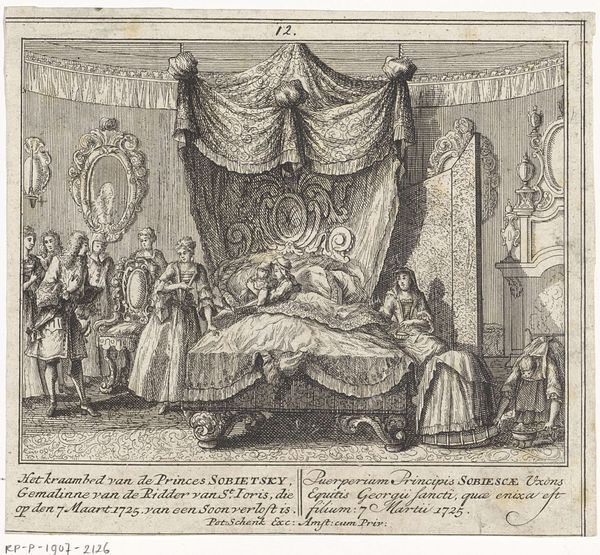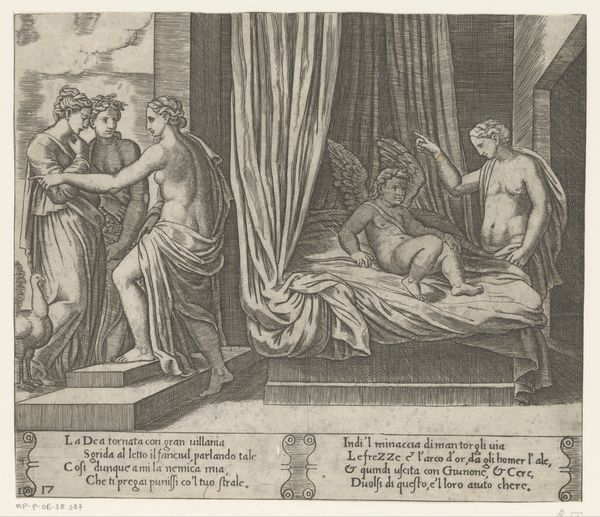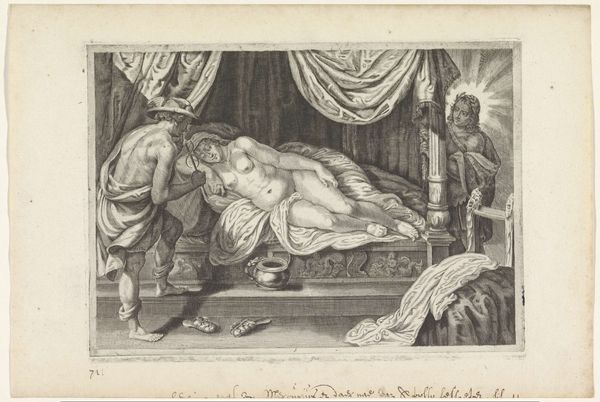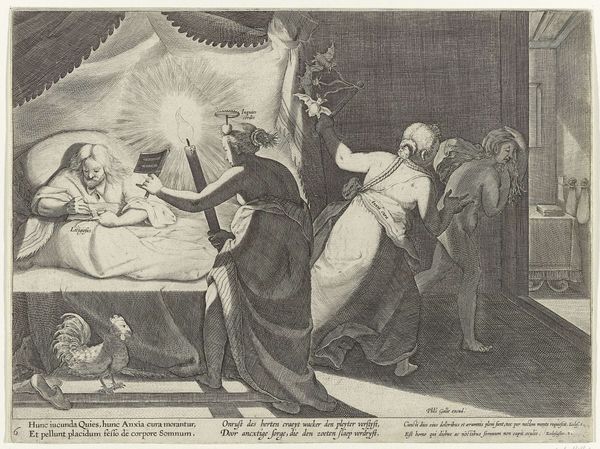
Plate 5: Isaac telling Esau to hunt for meat at left and Jacob and Rebekah at right, from Genesis 27, after a lost fresco in the basamento of Bay 5 of the Vatican Loggia 1650 - 1677
0:00
0:00
drawing, print, engraving
#
drawing
#
baroque
# print
#
history-painting
#
engraving
Dimensions: Sheet: 3 1/4 in. × 10 in. (8.3 × 25.4 cm) Plate: 3 7/16 × 9 3/4 in. (8.7 × 24.7 cm)
Copyright: Public Domain
Curator: This engraving by Pietro Santi Bartoli, dating from the late 17th century, presents "Plate 5: Isaac telling Esau to hunt for meat at left and Jacob and Rebekah at right," inspired by a lost fresco from the Vatican Loggia. What strikes you immediately? Editor: The crisp detail, despite its age, and the sharp linear quality. It feels intentionally austere. A depiction of scarcity maybe? The story it tells appears, at least at first glance, to be rather dark. Curator: Yes, well spotted. Bartoli, a key figure in Baroque printmaking, here reinterprets a scene of deception and familial conflict. We see Isaac, nearing death, instructing his son Esau, while simultaneously, Jacob and Rebekah plot their trickery. This touches on themes of inheritance, identity and manipulation within a patriarchal framework, still acutely relevant. Editor: That speaks volumes considering the social history embedded within printmaking at this time: disseminating narratives and control of the visual became newly democratized, yet also used to uphold hierarchies and existing systems. What about the materials? Is there any record about what influenced his artistic decisions for this series? Curator: Printmaking allowed wider access to art, impacting social understanding of religious and historical narratives, so the print functioned as more than a visual record; it participated in cultural discourse. Bartoli drew from classical forms, popular in baroque era, combining this influence to a narrative depicting ethical and power conflicts that have echoes across time and faith, something explored repeatedly within art historical circles, in terms of medium but also story. Editor: Thinking about the materiality and its connection to craft is fascinating, as this would've been accessible in many ways it created an important record and understanding of these visual motifs from religion to a broader viewership that simply wasn't previously there. Curator: Precisely, and I find Bartoli's commentary on gender dynamics still powerfully relevant in contemporary discussions about agency, and power struggles. Editor: I appreciate your attention to intersectional narratives of identity, gender, and race and its relation to labor with accessibly democratizing visual and philosophical interpretation of these visual motifs.
Comments
No comments
Be the first to comment and join the conversation on the ultimate creative platform.


